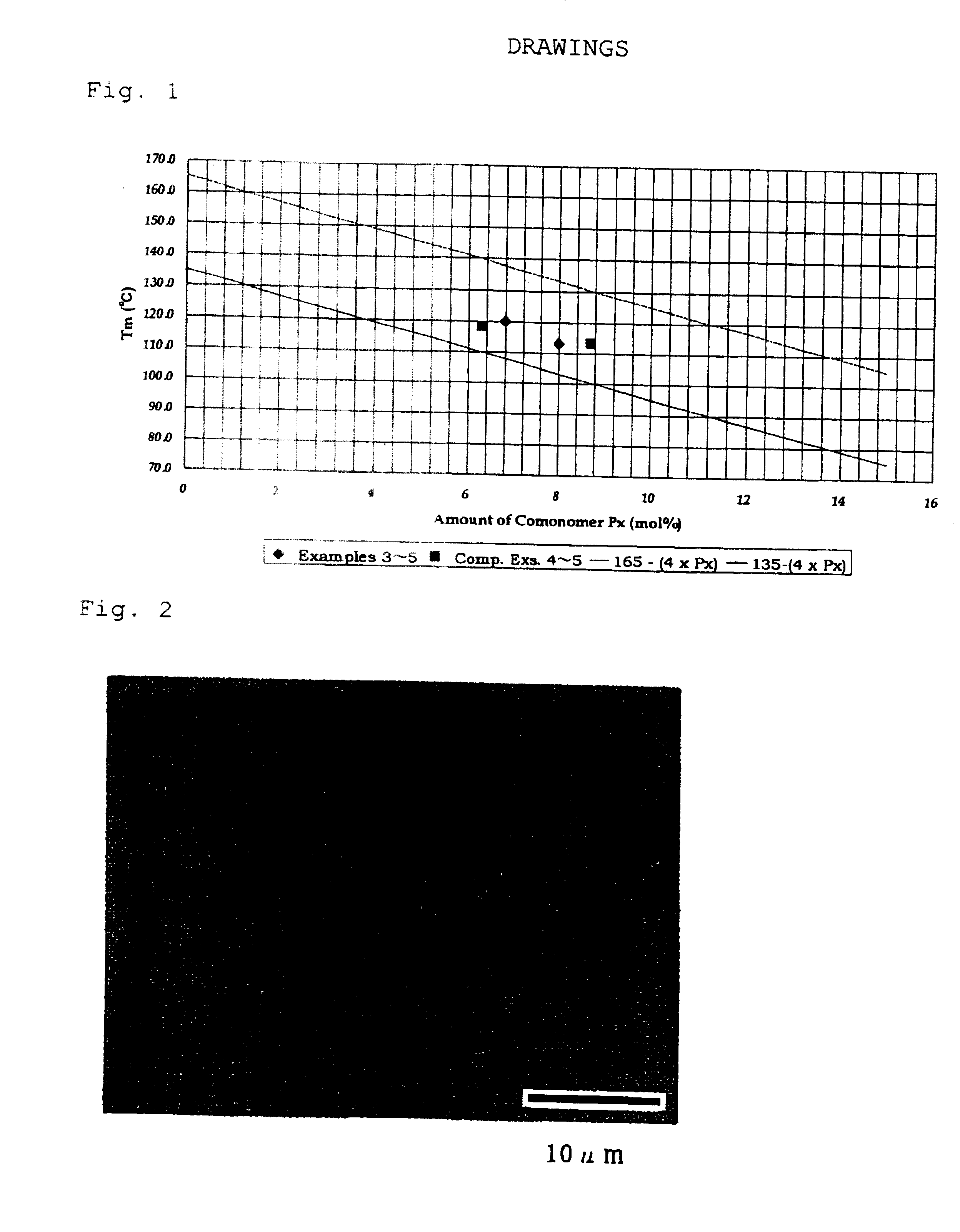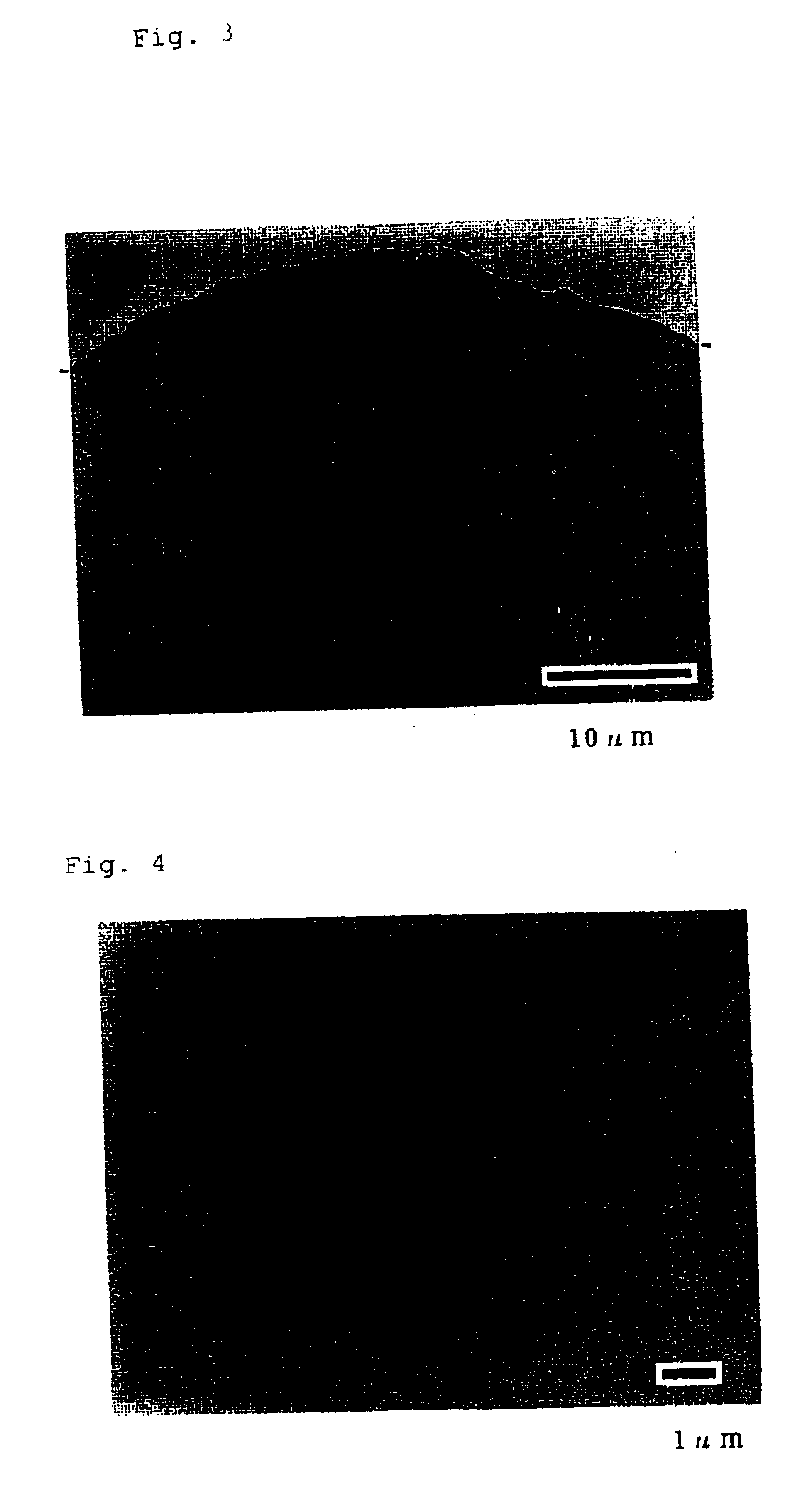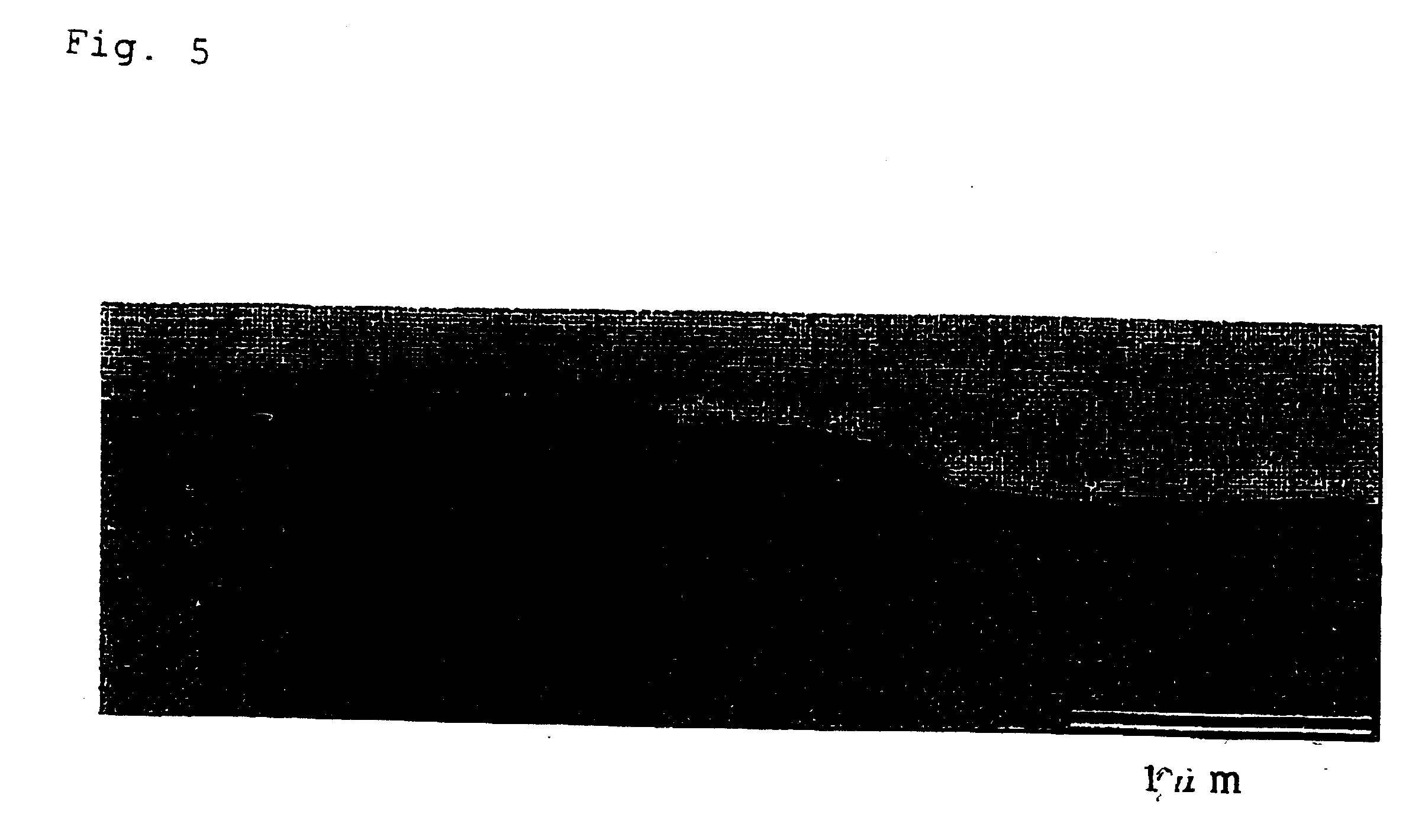Propylene random copolymers and use thereof
a technology of random copolymer and propylene, which is applied in the field of random copolymer to achieve the effects of less deterioration in transparency, low melting point and high anti-blocking property of film obtained from the copolymer
- Summary
- Abstract
- Description
- Claims
- Application Information
AI Technical Summary
Benefits of technology
Problems solved by technology
Method used
Image
Examples
example 1
[0193] (1) Preparation of Solid Catalyst Support
[0194] 300 g of SiO2 (Dohkai Chemical Industries Co., Ltd.) was sampled in a 1-L sidearm flask, and 800 mL of toluene was added to produce a slurry. Then, the slurry was transferred to a 5-L four-necked flask, and 260 mL of toluene was added. 2830 mL of a solution of methylaluminoxane (hereinafter, MAO) in toluene (10 wt% solution by Albemarle Corp.) was introduced to the slurry, and the mixture was stirred for 30 minutes at room temperature. The temperature was raised to 110° C. over one hour, and the mixture was stirred for 4 hours at the same temperature. After completion of stirring, the mixture was cooled to room temperature. After cooling, the supernatant toluene was removed and replaced with fresh toluene, and the replacement was carried out until the replacement rate reached 95%.
[0195] (2) Preparation of Solid Catalyst Component (Supporting of Metal Catalyst Component Onto Catalyst Support)
[0196] In a glove box, 2.0 g of iso...
example 2
[0208] The entire process was carried out in the same manner as in Example 1, except that the method of polymerization in the actual polymerization process [P-3] was changed as follows.
[0209] (1) Actual Polymerization [P-3]
[0210] A prepolymer slurry was obtained in the same manner as in the processes [P-1] and [P-2] of Example 1. The obtained slurry was sent to a vessel polymerization reactor having an internal volume of 1000 L and equipped with a stirrer, and was further subjected to polymerization. The polymerization reactor was supplied with 72 kg / hr of propylene, 15 NL / hr of hydrogen and 0.75 kg / hr of ethylene. Polymerization was carried out at a polymerization temperature of 70° C. and a pressure of 2.9 MPa·G.
[0211] The resulting slurry was sent again to a vessel polymerization reactor having an internal volume of 500 L and equipped with a stirrer and was further subjected to polymerization. The polymerization reactor was supplied with 16 kg / hr of propylene, 10 NL / hr of hydro...
example 3
[0247] (1) Preparation of Solid Catalyst Component (Supporting of Metal Catalyst Component Onto Catalyst Support)
[0248] In a glove box, 2.0 g of diphenylmethylene(3-tert-butyl-5-methylcyclopentadienyl)(2,7-di-tert-butylfluorenyl)zirconium dichloride was weighed into a 5-L four-necked flask. The flask was taken out, 0.46 L of toluene and 1.4 L of the MAO / SiO2 / toluene slurry prepared by the same method as in (1) of Example 1 were added to the flask under nitrogen, and the mixture was stirred for 30 minutes to support the catalyst onto the support. The resulting diphenylmethylene(3-tert-butyl-5-methylcyclopentadienyl)(2,7-di-tert-butylfluorenyl)zirconium dichloride / MAO / SiO2 toluene slurry was subjected to 99% substitution in n-heptane, and the final slurry amount was 4.5 L. This operation was carried out at room temperature.
[0249] (2) Precursory Polymerization [P-1]
[0250] 202 g of the solid catalyst component prepared in (1) above, 109 mL of triethylaluminum and 100 L of n-heptane we...
PUM
| Property | Measurement | Unit |
|---|---|---|
| Temperature | aaaaa | aaaaa |
| Percent by mass | aaaaa | aaaaa |
| Length | aaaaa | aaaaa |
Abstract
Description
Claims
Application Information
 Login to View More
Login to View More - R&D
- Intellectual Property
- Life Sciences
- Materials
- Tech Scout
- Unparalleled Data Quality
- Higher Quality Content
- 60% Fewer Hallucinations
Browse by: Latest US Patents, China's latest patents, Technical Efficacy Thesaurus, Application Domain, Technology Topic, Popular Technical Reports.
© 2025 PatSnap. All rights reserved.Legal|Privacy policy|Modern Slavery Act Transparency Statement|Sitemap|About US| Contact US: help@patsnap.com



